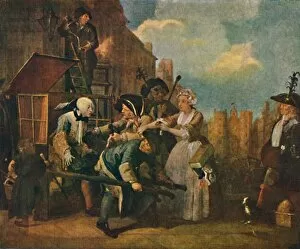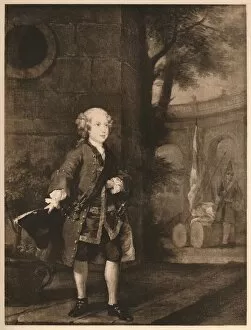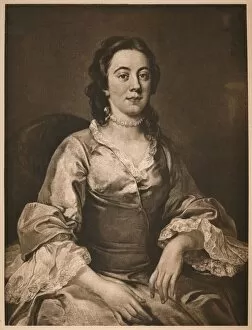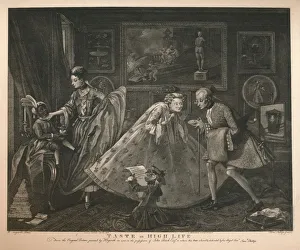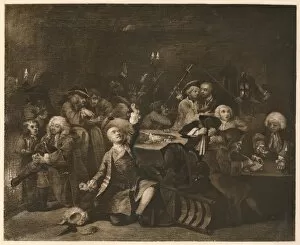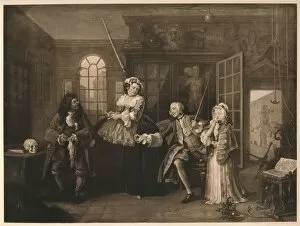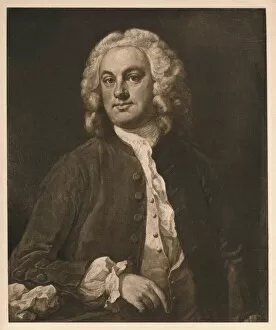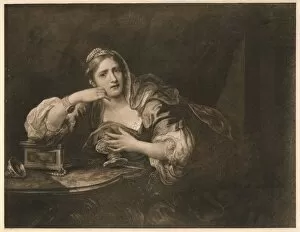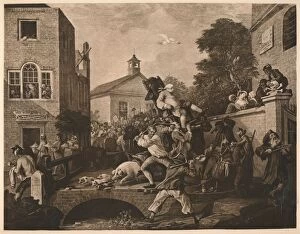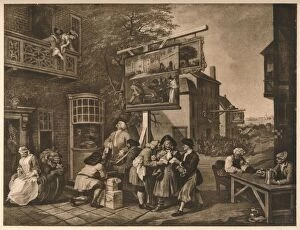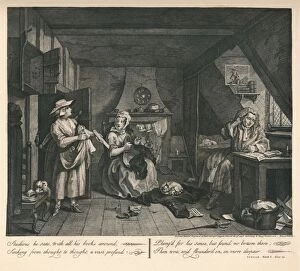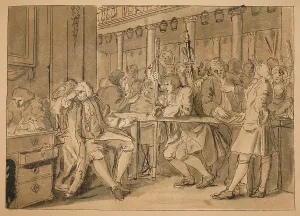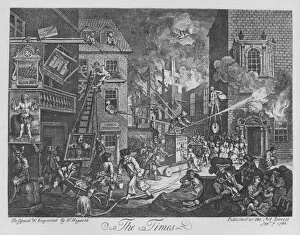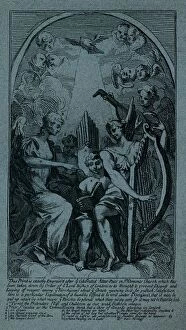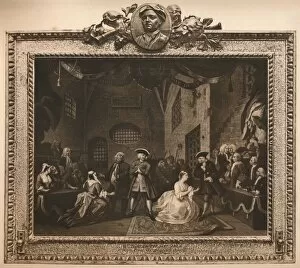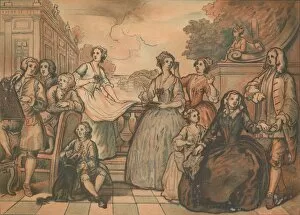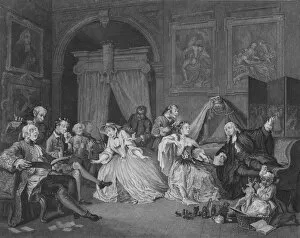William Hogarth Collection (page 28)
William Hogarth was an English painter, engraver and satirist who lived from 1697 to 1764
1,584 items
All Professionally Made to Order for Quick Shipping
-
William Hogarth Collection
William Hogarth was an English painter, engraver and satirist who lived from 1697 to 1764. He is best known for his series of paintings and engravings that depict the moral decay of society in the 18th century. His works often featured popular themes such as drunkenness, prostitution, gambling and corruption in politics. Hogarth's art was highly influential in shaping public opinion on these issues during a time when Britain was undergoing significant social change. His use of satire and caricature helped to expose the hypocrisy and immorality of those in power while also entertaining audiences with his witty commentary on everyday life.
+
Our beautiful Wall Art and Photo Gifts include Framed Prints, Photo Prints, Poster Prints, Canvas Prints, Jigsaw Puzzles, Metal Prints and so much more
The William Hogarth collection from Media Storehouse is a stunning array of wall art and framed prints that showcase the works of one of Britain's most celebrated artists. Our collection features some of Hogarth's most popular themes, including his satirical depictions of 18th-century society, such as "A Rake's Progress" and "Marriage A-la-Mode." These prints are available in various sizes to suit any decor style, making them perfect for both homes and offices. Hogarth was known for his ability to capture the essence of everyday life through his intricate illustrations. His work often featured social commentary on issues like politics, morality, and class structure. The William Hogarth collection allows viewers to appreciate these timeless pieces in their own space. Whether you're an art enthusiast or simply looking for a unique way to decorate your walls, our collection offers something for everyone. With its high-quality printing and framing options, it's easy to see why Media Storehouse has become a go-to destination for those seeking beautiful artwork at affordable prices.
+
What are William Hogarth (Popular Themes) art prints?
William Hogarth was an English painter and engraver who lived during the 18th century. His art prints are known for their satirical commentary on contemporary society, particularly in London. Some of his popular themes include the vices and virtues of humanity, social class, politics, and morality. Hogarth's most famous series of prints is "A Harlot's Progress," which depicts the tragic story of a young woman who falls into prostitution. Another notable series is "Marriage à-la-mode," which portrays the disastrous consequences of arranged marriages among wealthy families. In addition to these narrative works, Hogarth also created individual prints that tackled various issues such as crime, alcoholism, and corruption in government. His style was characterized by its realism and attention to detail. Today, William Hogarth's art prints remain popular among collectors and those interested in British history and culture. We offer a unique glimpse into life during the Georgian era while still resonating with modern audiences through their timeless themes.
+
What William Hogarth (Popular Themes) art prints can I buy from Media Storehouse?
We offer a wide range of William Hogarth art prints that depict popular themes from the 18th century. Some of the most sought-after prints include "Gin Lane" and "Beer Street," which are part of his famous series entitled "The Harlot's Progress." These prints portray the negative effects of alcoholism on society, particularly among women. Other popular Hogarth prints available at Media Storehouse include "Marriage A-la-Mode," a satirical commentary on arranged marriages between wealthy families; "The Rake's Progress," which depicts the moral decline and eventual downfall of a young man who squanders his inheritance; and "Four Times of Day," a series that portrays different scenes in London during various times of day. Whether you're looking for social commentary, satire, or simply beautiful depictions of life in 18th-century England, we have an extensive collection of William Hogarth art prints to choose from.
+
How do I buy William Hogarth (Popular Themes) art prints?
To buy William Hogarth art prints from Media Storehouse, you can browse our extensive collection of prints featuring the artist's popular themes. Once you have found a print that catches your eye, simply select the size and format you prefer and add it to your cart. We offer a range of sizes and formats for their prints, including posters, canvas wraps, framed prints, and more. You can choose the option that best suits your needs and budget. Once you have added all the items you wish to purchase to your cart, proceed to checkout where you will be prompted to enter your shipping information and payment details. After completing these steps, your order will be processed by Media Storehouse. Buying William Hogarth art prints from Media Storehouse is an easy process that allows you to enjoy high-quality reproductions of this renowned artist's work in your own home or office.
+
How much do William Hogarth (Popular Themes) art prints cost?
William Hogarth art prints are available for purchase at Media Storehouse. The cost of these prints varies depending on the size, framing options, and other customization choices that you may make. However, it is important to note that We offer a wide range of affordable options for those interested in purchasing William Hogarth's popular theme art prints. The price of each print will depend on your specific requirements and preferences. You can choose from various sizes ranging from small to large, as well as different framing options such as black or white frames. Additionally, you can select whether you want your print to be mounted or unmounted. The cost of William Hogarth art prints at Media Storehouse is reasonable and accessible for anyone who wants to own a piece of this renowned artist's work.
+
How will my William Hogarth (Popular Themes) art prints be delivered to me?
Your William Hogarth art prints will be delivered to you in a safe and secure manner by Media Storehouse. The company takes great care in packaging your prints so that they arrive at your doorstep undamaged. Your prints will be carefully rolled and placed inside a sturdy cardboard tube, which is then sealed with tape to prevent any moisture or dirt from entering the package. Media Storehouse uses reliable courier services for delivery, ensuring that your order reaches you on time and in excellent condition. You can track the progress of your shipment online using the tracking number provided by the company. Once you receive your William Hogarth art prints, it is recommended that you unroll them immediately and lay them flat to allow any creases or wrinkles to disappear naturally over time. With proper handling and care, these beautiful artworks will add character and charm to any room in your home or office for years to come.






